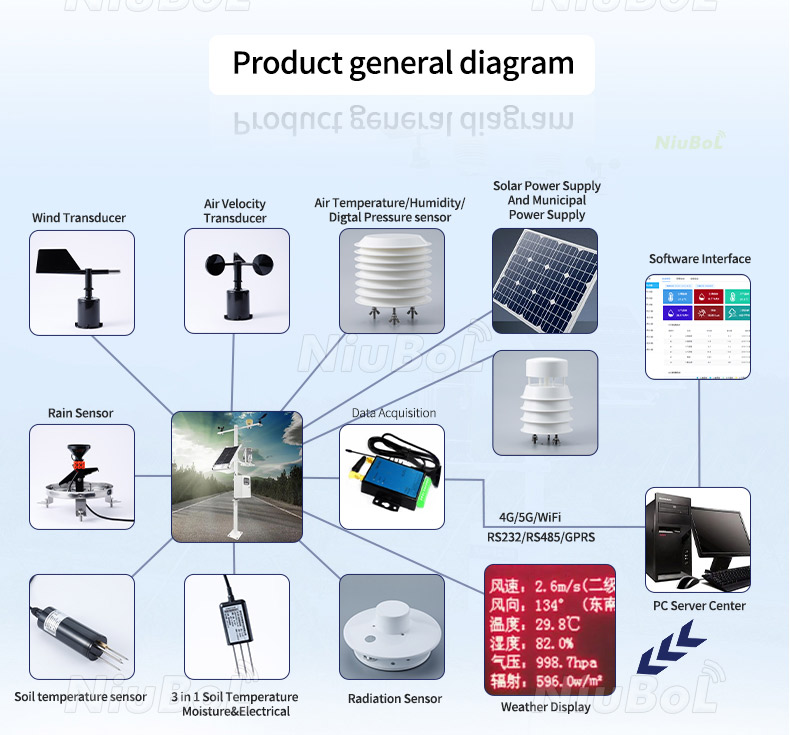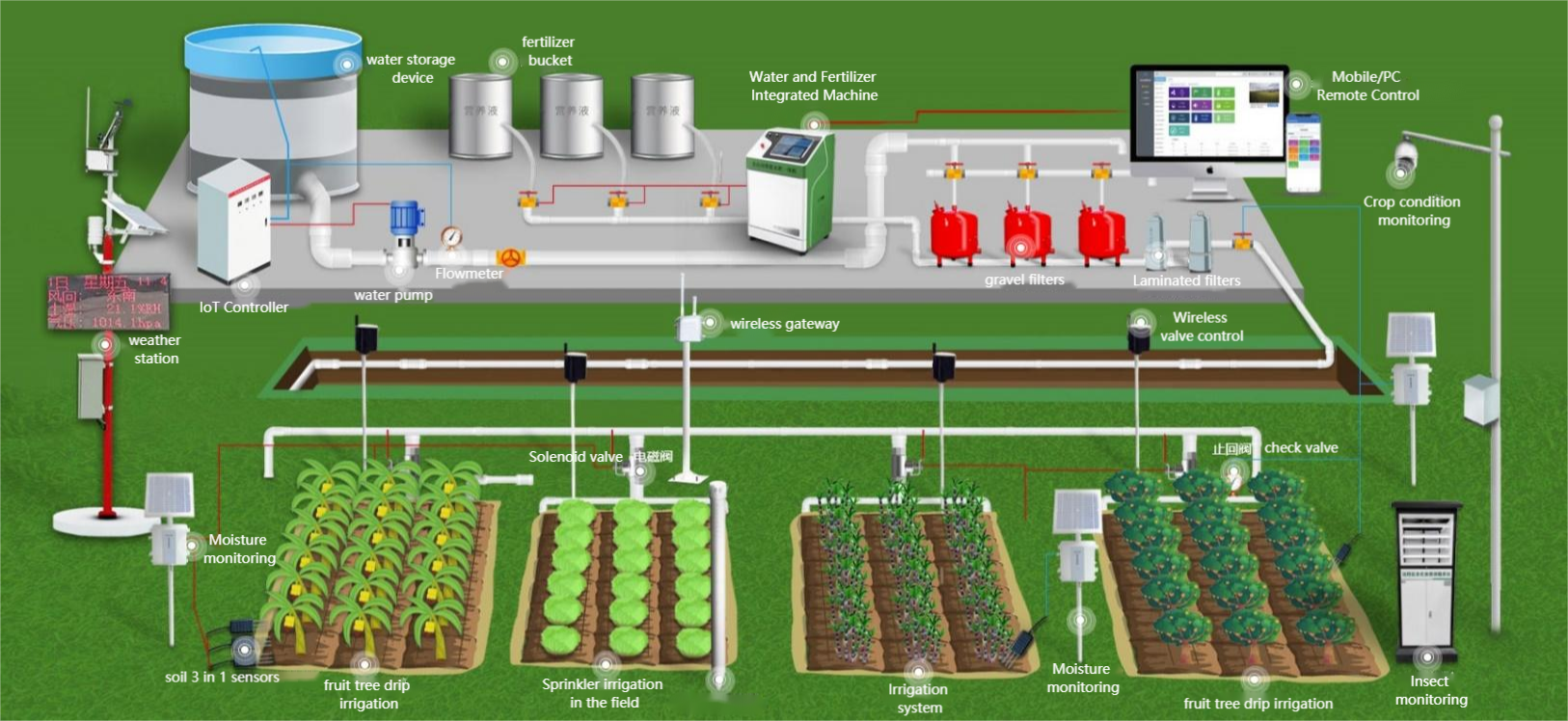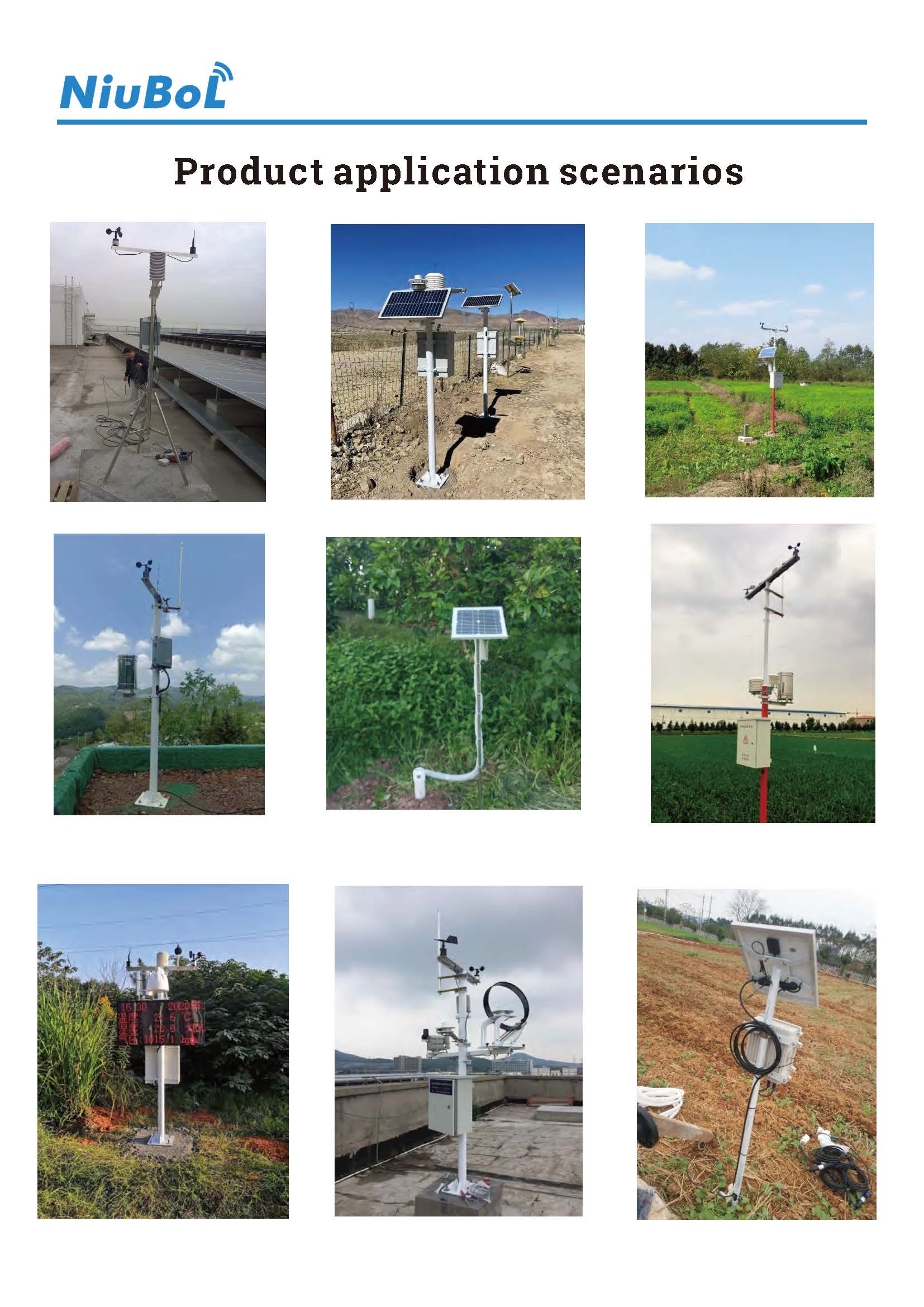

— Blogs —
—Products—
 Consumer hotline +8618073152920
Consumer hotline +8618073152920 WhatsApp:+8615367865107
Address:Room 102, District D, Houhu Industrial Park, Yuelu District, Changsha City, Hunan Province, China
Product knowledge
Time:2024-09-23 11:29:38 Popularity:2220
On a 5-acre farm, a range of environmental sensors are often required to monitor key environmental parameters in order to ensure healthy crop growth and effective management. Below is a simplified list of sensors:
Soil Temperature and Moisture Sensor:
Used to monitor soil temperature and humidity to help farmers understand the state of the soil, irrigate and regulate soil temperature in a timely manner.
Measures light intensity to ensure that crops receive enough light for photosynthesis.
Suitable for greenhouse or open field cultivation, helping farmers to adjust the use of shade nets or supplementary lights.
Air temperature and humidity sensor:
Monitors the temperature and humidity of the air on the farm to provide a suitable growing environment for crops.
Especially in greenhouses or greenhouses, air temperature and humidity have a significant impact on crop growth.

Wind Speed and Direction Sensor:
Monitor the wind speed and direction in the farm area to help predict weather changes and prevent natural disasters (e.g. high winds, dust storms, etc.).
Especially important for crops grown in the open field.
Automatically measures the amount of precipitation, helping farmers to understand the rainfall situation and rationalise irrigation schedules.
Suitable for dry or rainy areas to ensure crop water balance.
Measures the acidity and alkalinity of the soil to ensure that the soil pH is within the appropriate range for the crop.
These sensors can be used individually or integrated into smart farming systems for remote monitoring and data analysis through IoT technology. When selecting sensors, consider their measurement range, accuracy, long-term stability and compatibility with existing data collection and monitoring systems.
Please note that the above list only includes basic sensor devices. Depending on the specific needs of the farm and the type of crop, other types of sensors may need to be added, such as soil conductivity sensors (for measuring soil salt content), carbon dioxide sensors (for monitoring carbon dioxide concentration in the greenhouse), and so on.
With regard to the exact number of sensors required on a 5-acre farm, this will depend on a number of factors, including the layout of the farm, the type of crop, the method of cultivation (e.g. greenhouse, greenhouse or open field cultivation), and the monitoring accuracy and coverage that the farmer wishes to achieve. The following is a suggested range of quantities based on general conditions, but please adjust accordingly:
If the farm is evenly distributed and soil conditions are relatively uniform, then sensors can be installed in several key areas of the farm (e.g. entrance, centre, exit, etc.), 1-2 per area, for a total of 3-6 sensors that may be required.
If the topography of the farm is complex or soil conditions vary widely, additional sensors may be required to more accurately monitor soil condition.
For greenhouse or greenhouse cultivation, at least 1 light level sensor is installed in each greenhouse/greenhouse to monitor internal light conditions.
Consider increasing the number of sensors if the greenhouses/trellises are large or the internal light is unevenly distributed.
For open field cultivation, if the farm is large and the crop is sensitive to light, a small number of sensors can be installed in different areas for monitoring.

Similar to light level sensors, a minimum of 1 each should be installed in greenhouses/trellises, more may be required depending on size and internal environment.
Open field farms can install air temperature and humidity sensors in key areas (e.g. crop concentration areas, entrances, etc.).
There is usually not much need for wind speed and direction sensors on the farm, as wind speed and direction are relatively consistent across the farm.
1-2 sensors can be installed at a high point or open area of the farm for monitoring.
It is usually sufficient to install only 1 rain sensor on the farm as it monitors rainfall across the farm.
If the farm is very large and has complex terrain, consider installing a small number of sensors in different areas to get a more comprehensive rainfall data.
Similar to soil temperature and humidity sensors, soil pH sensors can be installed in several key areas of the farm, 1-2 per area, with a total of 3-6 sensors likely to be needed.
If soil conditions vary greatly, an increased number of sensors may be required.
Please note that the above quantities are suggested ranges only and can be adjusted to suit.

On a 5 acre farm, the number of sensors will need to be customised to suit the terrain, crop and monitoring needs. Typically, it is recommended to install 3-6 soil temperature and humidity sensors, at least 1 light level and air temperature and humidity sensor per greenhouse, 1-2 wind speed and direction and 1 rain sensor on the farm, and 3-6 soil pH sensors. These sensors help farmers to accurately monitor environmental parameters, optimise crop growing conditions and improve production efficiency. The exact number should be flexibly adjusted according to the actual situation.
Related recommendations
Sensors & Weather Stations Catalog
Agriculture Sensors and Weather Stations Catalog-NiuBoL.pdf
Weather Stations Catalog-NiuBoL.pdf
Related products
 Combined air temperature and relative humidity sensor
Combined air temperature and relative humidity sensor Soil Moisture Temperature sensor for irrigation
Soil Moisture Temperature sensor for irrigation Soil pH sensor RS485 soil Testing instrument soil ph meter for agriculture
Soil pH sensor RS485 soil Testing instrument soil ph meter for agriculture Wind Speed sensor Output Modbus/RS485/Analog/0-5V/4-20mA
Wind Speed sensor Output Modbus/RS485/Analog/0-5V/4-20mA Tipping bucket rain gauge for weather monitoring auto rainfall sensor RS485/Outdoor/stainless steel
Tipping bucket rain gauge for weather monitoring auto rainfall sensor RS485/Outdoor/stainless steel Pyranometer Solar Radiation Sensor 4-20mA/RS485
Pyranometer Solar Radiation Sensor 4-20mA/RS485
Screenshot, WhatsApp to identify the QR code
WhatsApp number:+8615367865107
(Click on WhatsApp to copy and add friends)
